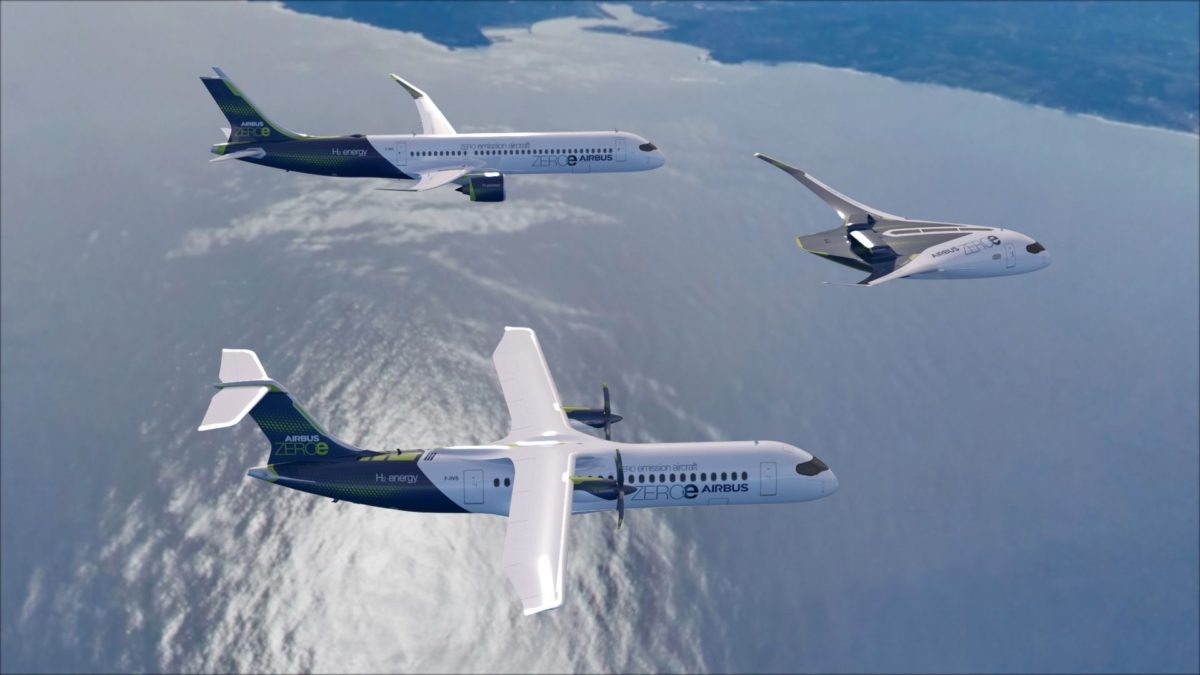If ‘power-to-liquid‘ (PtL) kerosene is to play a vital part in decarbonizing air transport, the world will need a lot more renewable energy generation capacity.
That is one of the conclusions of a paper which has attempted to assess what would be needed to establish a PtL production industry.
The Power-to-Liquid fuels for aviation – Processes, resources and supply potential under German conditions study, by three academics from the Hamburg University of Technology, considers the requirements for PtL production in Germany, as the title suggests.
Perhaps dishearteningly for the scientists from the university's Institute of Environmental Technology and Energy Economics, the conclusion they reached was that a 2050 price range for the green aviation fuel of €1.80-3.10/kg meant a domestic industry was unlikely. With other studies having forecast a PtL cost of €0.62-1.68/kg in markets such as the Atacama region of Chile – which have the potential for ultra-low renewable energy costs by mid-century – the report's authors concluded: “a large scale provision and application of PtL kerosene in Germany will most likely be covered by imported fuels.”
Clean power
Whether the future of PtL lies in Germany, the Atacama or the Middle East, however, the paper – which will be published in the November edition of Applied Energy – does indicate the larger volume of renewables generation capacity required to supply the clean power needed to manufacture the synthetic aviation fuel from water and from carbon dioxide (CO2) drawn from sustainable industrial sources, such as bioethanol production.
In a German base case scenario predicated on current forecasts for PtL kerosene demand, technological developments, electricity prices and renewables capacity, the Hamburg group concluded 50 TWh of clean energy would be required in 2030 to meet the expected 10% of overall kerosene demand accounted for by the PtL form of the fuel. That volume is similar to the 46 TWh of solar power generated in Germany in 2018, the researchers pointed out.
Popular content
Under the same, baseline scenario, 442 TWh of clean energy would be needed for PtL production by mid century. The researchers considered 13 future supply scenarios and under the most ambitious one – which envisioned PtL kerosene supplying up to 95% of overall demand – concluded up to 600 TWh of clean power would be needed, necessitating a 300% rise in renewables output from today's figure.
As the researchers concluded: “These numbers lead to the conclusion that either the target pathways for renewable energies must be adjusted dramatically to meet the projected demands of … PtL production in Germany, or the respective sustainable fuels have to be imported.”
‘Green' CO2
Renewables capacity may not be the only, or even most significant hurdle to a TfL kerosene industry, according to the paper. The scientists estimated at least 21% of the sustainable CO2 required for their baseline 2050 production scenario would have to come either from directly extracting the 0.04% present in the air or from other, new, non-greenhouse gas contributing sources, such as biogenic consumer waste. A higher proportion of kerosene in the final PtL kerosene fuel mix could drive that percentage of CO2 from future technology up to 42% and the figure rose to 50% under the most extreme demand scenario for 2050. “This poses a technological challenge for the next two decades,” said the authors of the paper.
The ability of PtL kerosene to contribute to reducing greenhouse gas emissions has been criticized in some quarters because the water-vapor-and-soot condensation trails left by aircraft at high altitudes form ice crystals in the cold air which prevent heat radiating from the earth, thus having a greater global heating effect than emissions at ground level. It is a factor acknowledged by the Hamburg researchers in their paper.
And whilst power-to-liquid sustainable aviation fuel production could hold promise for global solar deployment, the researchers added the sobering note: “So far, not a single drop of PtL kerosene is produced commercially.”
This content is protected by copyright and may not be reused. If you want to cooperate with us and would like to reuse some of our content, please contact: editors@pv-magazine.com.



I have not been flying since 1997. I´d like to see interesting places all over the world but – for my childrens sake – i´m not allowed to, if it isnt possible without planes or ship-vessels. Do not fly! Spend the money for modules and batteries.
I think we could have a carbon neutral airline soon for people like you. If we used surplus wind to refine carbon captured fuel it would cost about twice the current price. Because fuel is about half the cost of flying carbon neutral flights would cost about 50% more. This will come down as the proportion of costs due to fuel decreases with post-covid travel volumes, and with mass fuel production. I think some people would be prepared to pay this. You don’t need planes – just buy seats with existing airlines in exchange for using carbon neutral fuel.
BTW: you can’t use biofuels for this as it would have a devastating effect on biodiversity and we need the carbon capture from land just to survive, so we can’t use it as an offset as the aviation industry pretends.